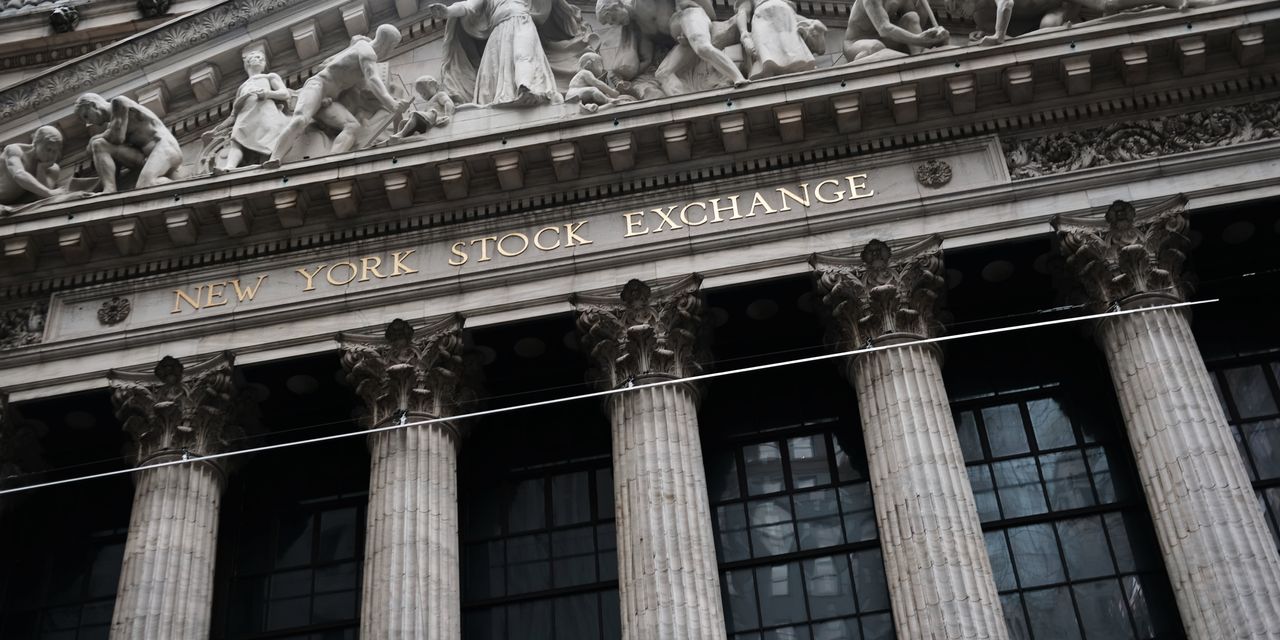One of the oldest methods for anticipating where the U.S. stock market could be headed is making a comeback as the Dow Jones Industrial Average touches a fresh 2023 high.
It’s called the Dow Theory, and it dates back to the dawn of the 20th Century, when U.S. investors chiefly had two major stock-market benchmarks to examine: the Dow Jones Industrial Average
DJIA,
and its sibling, the Dow Jones Transportation Average
DJT,
On Monday, the Dow industrials logged a fresh 2023 closing high, finishing at 34,585.35 after climbing 76.32 points, or 0.2%, according to FactSet data.
That marked the blue-chip gauge’s highest close since Nov. 30, 2022, when it finished at 34,589.77, the Dow industrials’ current 52-week high. As of Monday’s close, the Dow roughly was 0.1 percentage points away from reaching a fresh 52-week high, according to Dow Jones Market Data.
Meanwhile, just last week, the Dow transports, a gauge of 20 stocks related to railroads, airlines and delivery and logistics services like FedEx Corp.
FDX,
reached a new 52-week high of its own.
The timing looks auspicious, with one longtime stock-market analyst saying the Dow Theory is sending its first bullish signal in more than 15 months.
“Despite numerous warning signals from cross asset analysis, including the still deeply inverted yield curve, Dow Theory, which is one of the most historically accurate strategies to identify the primary trend in the stock market, is now saying the path of least resistance is higher for the first time since April of 2022,” said Tom Essaye, founder of Sevens Report Research and a former Merrill Lynch trader, in a Monday note to clients.
Craig Johnson, chief market technician at Piper Sandler Technical Research, was slightly more cautious in his assessment, but not by much.
While the Dow Theory signal hasn’t technically been issued yet, he said it likely will emerge soon, once new 52-week highs have been cemented, barring a sudden swoon for markets.
“Dow theory is alive and well, for sure,” Johnson said in a phone interview with MarketWatch. “We’re not quite there yet, but you’re getting very close to getting a Dow Theory buy signal.”
What’s the Dow Theory?
Pioneered by Charles H. Dow, one of the founders of The Wall Street Journal and Dow Jones & Co., and the publisher of MarketWatch, the theory states that if two stock-market averages, most commonly the Dow industrials and transport gauges, reach notable new highs within the same short period, then the broader market is likely headed higher.
It also was one of the first theories that sought to codify a methodology for prognosticating where the market might be headed in the intermediate future. For more than a century, it’s been a staple in the repertoire of technical strategists, who aim to glean insights through analysis of stock-market charts and indicators.
Dow Theory has lost some of its luster in modern times, especially as the Dow has taken a backseat in recent years to the S&P 500
SPX,
and highflying tech-heavy indexes like the Nasdaq Composite
COMP,
and Nasdaq-100
NDX,
Critics also have lambasted it as overly simplistic.
But proponents of the Dow Theory can still point to a wealth of historical data showing it generally works as a buy signal, especially if its broadened to include other indexes like the now-dominant S&P 500.
What is it telling us?
Dow Theory is telling investors that the market rally will likely continue as cheaper areas of the market catch up to highflying megacap technology names. Some say this trend already appears to be under way, since the Russell 2000, a gauge of small-cap stocks, and previously lagging sectors like the S&P 500 Industrials Index, have picked up over the last month.
Over the past 30 days, the S&P 500 industrials sector has risen 3.8%, beating gains over the same stretch for information technology stocks, the market leaders so far this year, according to FactSet data.
“What’s amazing to me when you look at this whole thing and you put it together, there’s got to be a catch up with small- and mid-cap stocks,” Johnson said.
Although the S&P 500 and Nasdaq already have seen impressive gains this year, there’s plenty of room for other areas of the market to power higher. Johnson noted that the record highs for the Dow transports and industrials are still a ways off.
The industrials are still 6.4% shy of the record highs reached in early January 2022, FactSet data show, while the transports are still more than 13% below their record highs from early November 2021.
But according to Johnson, bullish signals aren’t only emanating from the charts. There’s a common-sense component as well.
“What are portfolio managers going to do that have been fighting this tape all year? If you’re bearish and this market makes a record high, you’re not going to have a lot of friends.”
Read the full article here





